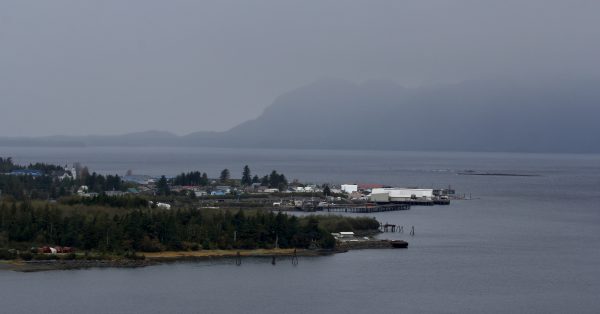
It has been nearly four months since Alaska communities started receiving money from the state’s share of federal COVID-19 relief. And even though the process is simple, more than one in four communities haven’t claimed the money yet.
Reginald Atkinson is the mayor of Metlakatla, where local leaders are trying to figure out how to spend $531,000. That’s the amount the state government set aside for the community from the state’s $569 million CARES Act community grant program.
“We have not yet arrived at that point,” he said, adding: “The plans are in the making.”
Metlakatla is one of 63 Alaska communities that haven’t accepted their grants, out of 228 communities the state planned to give the money to.
SEE ALSO: Alaska judge blocks ballot printing after candidate raises “clear” legal questions about design
Metlakatla already received a federal grant from another category of CARES Act funding, for tribal governments. And fishing businesses in the community are going to receive money from yet another batch of CARES Act funds. But Atkinson said it’s been a challenge to determine which expenses are eligible to be covered by the grant.
All Alaska communities had to do to receive the first round of state funding was to sign a grant agreement and pass a resolution accepting the grants. Metlakatla is going to consider the issue at its Oct. 6 council meeting.
Sandra Moller oversees the grant program as the director of the state Division of Community and Regional Affairs. She said the state has encouraged communities to take those steps to claim their funds and answered questions from local leaders as they’ve come up.
“We’ve reached out at least three times to each community,” she said.
She said communities have different reasons for not accepting the grants. Some haven’t had COVID-19-related expenses that would be eligible to be covered by the funding.
“Obviously, every community has expenses, and these are really trying times,” she said. “However, once they looked at the documents, and saw the eligibile requirements from the federal treasury, they chose not to apply.”
Another reason is some of the communities are very small — and they don’t have the staff to handle the grant process.
Others, like Metlakatla, are tribal governments that have received other federal CARES Act payments. And some of them have had their COVID-19 costs covered by those payments.
While most of the communities the state planned to give grants have municipal governments — including 144 cities and 19 boroughs — most of those that haven’t accepted the money so far are unincorporated communities, which include both tribal governments and nonprofit community associations. And they have fewer staff to process grant applications.
Two cities– Koyukuk and Platinum — aren’t receiving money because they didn’t apply for state community assistance last year. The state used that program as the basis for determining which communities received CARES Act grants.
The state designed the program so that municipalities would receive their grants in three payments. Most of the money was scheduled to go out in the first payment, scheduled for May. And follow-up payments were scheduled for July 1 and Oct. 1.
But to receive these follow-up payments, communities had to show that they had spent 80 percent of what they had received so far. As of Thursday morning, only 18 communities had done that, receiving $19.2 million of the $101.7 million budgeted for the second round of payments.
Moller said she can’t guess why communities haven’t applied for the later payments.
“A community was granted basically the entire amount allocated to them,” she said. “Whether they use that or not is not our decision. They have to meet their own minimum requirements that we set out.”
To make things even more confusing, the federal government has repeatedly updated its guidance to states and communities about what expenses are eligible for the grants. And Congress could further expand what expenses are eligible if it can agree on another relief bill. This has left communities with a lot of uncertainty.
Nils Andreassen, the executive director of the Alaska Municipal League, has been helping local leaders with the grants.
He said the federal government has increased the amount of information communities must provide to receive the money.
“So there’s a process involved. And every, even just little, step for a small community is a challenge,” he said. “And that’s what we’re doing right now, is for all of those that are on the list who haven’t requested those funds, we’re walking through, with each and every one of them, here’s how to do this. Here’s what to do. How can we help?”
Andreassen expects many municipalities to seek their second payments in the next few weeks, followed by the third payments.
Andreassen said most municipalities are devoting much of the grants to relief payments to local businesses and other organizations. Federal guidelines prevent communities from using the grants to make up for lost revenue.
“I think we’ll come to the end of this process with communities that are still in dire straits, based on lost revenue,” he said. “And for as much as CARES Act funds will help them through this period, there’s going to be significant challenges ahead of us.”
Any money that communities don’t spend by Dec. 30 must be returned to the federal government.
Andrew Kitchenman is the state government and politics reporter for Alaska Public Media and KTOO in Juneau. Reach him at akitchenman@alaskapublic.org.




